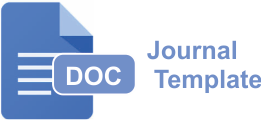Analysis of the Implementation of Audio Visual Media in English Instruction at MTs Negeri 1 Banggai
DOI:
https://doi.org/10.32529/beej.v6i1.3929Abstract
The purpose of this research is to analyze the use of audio-visual media in teaching English at MTs Negeri 1 Banggai. This study uses a qualitative research method with the subjects being students and teachers of English at MTs Negeri 1 Banggai. The research findings show that: 1) Students pay attention well in class, become more active, and often answer the teacher's questions; 2) The majority of students are more interested in the use of audio-visual media in their classroom activities; 3) Teachers understand teaching using audio-visual media because they have been using it for a long time and are accustomed to it. Audio-visual media has strengths and weaknesses: its strength lies in making teaching and learning activities easier to understand for students and helping teachers explain material more effectively. The weaknesses include a high dependence on electricity and the significant amount of time required to set up the audio-visual media in the classroom.
References
Angraini, E., & Faridah, A. (2018). Effectiveness of Multimedia Based Learning Media on Bakery Courses. Cullinary Art of Home Economics Department.
Creswell, J. W. (2008). Educational Research: Planning,, Conducting, and Evaluating Quantitative and Qualitative Research (Fourth Edi). Pearson.
Fajriati, R. (2017). Pengaruh Media Audio Visual Terhadap Hasil Belajar Siswa Dalam Sub Tema Perubahan Lingkungan Di Kelas V MIN Bilui Ace Besar. Universitas Islam Negeri Ar-Raniry Darussalam Banda Aceh.
Fauziati, E. (2008). Introduction to Methods and Approaches in Second or Foreign Language Teaching. Surakarta: Era Pustaka Utama.
Madhuri, J. N. (2013). Use of Audio Visual Aids in Teaching and Speaking. Research Journal of Enhlish and Literature (RJELAL), 1(3), 118–122.
Masterman, L. (2005). Teaching the Media. Mk Media Press.
Mayer. (2022). Learning to learn. Education + Training, 15(1), 29–30. https://doi.org/10.1108/eb001749
Miftah, M. (2013). Fungsi, dan Peran Media Pembelajaran Sebagai Upaya Peningkatan Kemampuan Belajar Siswa. 95–105.
Munna, A. S., & Kalam, M. A. (2021). Teaching and learning process to enhance teaching effectiveness: literature review. International Journal of Humanities and Innovation (IJHI), 4(1), 1–4. https://doi.org/10.33750/ijhi.v4i1.102
Purwono, J., Yutmin, S., & Anitah, S. (2014). Penggunaan Media Audio-Visual Pada Mata Pelajaran Ilmu Pengetahuan Alam Di Sekolah Menengah Pertama Negeri 1 Pacitan. Jurnal Teknologi Pendidikan Dan Pembelajaran, 2(2).
Putri, R. E., & Hanantio, Y. N. (2013). Pandangan Siswa Sekolah Menengah Atas Tentang Bahasa Inggris Sebagai Bahasa International. Poloteknik Negeri Bandung.
Ratminingsih, N. M. (2016). Efektivitas Media Audio Pembelajaran Bahasa Inggris Berbasis Lagu Kreasi Di Kelas Lima Sekolah Dasar. JPI (Jurnal Pendidikan Indonesia), 5(1), 27. https://doi.org/10.23887/jpi-undiksha.v5i1.8292
Reina, J. D. (2018). The Use of Audio Visual Media by Senior High School Teacher to Teach English. Angewandte Chemie International Edition, 6, 10–27.
Ridhwan. (2016). Penggunaan Media Audio vVsual Dalam Meningkatkan Hasil Belajar Siswa Pada Materi Peninggalan Sejarah di Kelas V MIN Miruk Aceh Besar (Vol. 85, Issue 1). Universitas Islam Negeri Ar-Rainy Darussalam Banda Aceh.
Rusydiyah, E. F. (2020). Media Pembelajaran Problem Based Learning. UIN Sunan Ampel Press.
Saidaturrohmah, U. (2017). Implementasi Media Audio Visual Dalam Pembelajaran Kebudayaan Sejarah (SKI) di Kelas V Al-Islam Bangsri Jepara. STAIN Kudus.
Sequeira, A. H. (2012). Introduction to Concepts of Teaching and Learning. National Institute of Technology Karnataka, Surathkal, India, 1–6.
Zakiya, R. A. (2019). Penggunaan Media Audio Visual Dalam Pembelajaran Fiqih Pada Peserta Didik Kelas X di MAN 1 Trenggalek. IAIN TULANGAGUNG.
Downloads
Published
Issue
Section
License
Copyright (c) 2025 Armin Haluti, Abdul Rabbi Arrasul, Aisyah Tiara Dewi, Mukmin

This work is licensed under a Creative Commons Attribution-NonCommercial 4.0 International License.



